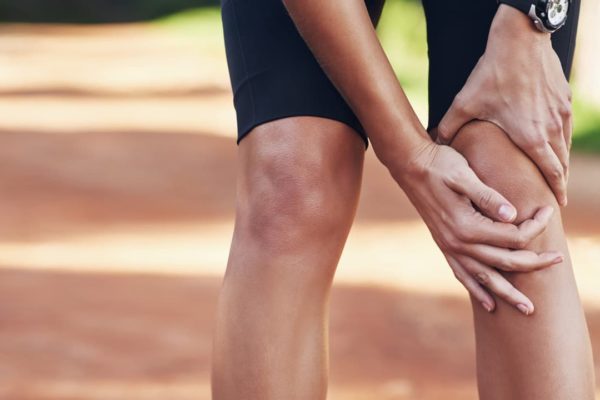
Iliotibial Band Syndrome (Runner’s Knee)
ITBS (iliotibial band syndrome) is one of the most common reasons of knee pain, especially in people who participate in endurance sports. It is responsible for up to 12% of running injuries and up to 24% of cycling injuries. ITBS is usually treated conservatively with physiotherapy and temporary activity changes.
What is Iliotibial Band Syndrome (ITBS)/ Runner’s Knee?
Excessive irritation creates pain on the outer (or lateral) region of the knee, resulting in iliotibial band syndrome (ITBS). The iliotibial band (ITB), often known as the “IT band,” is a type of soft tissue that extends from the pelvis to the knee on the side of the thigh. As it approaches the knee, its form thickens as it passes through the lateral femoral condyle, a prominent portion of the thigh (femur) bone. It connects the tensor fascia latae (TFL) with the gluteus maximus, two key hip muscles, near the pelvis.
When an individual moves through repetitive straightening (extension) and bending (flexion) of the knee, friction between the ITB and surrounding components causes irritation and inflammation. ITBS pain is most commonly caused by overuse during sports such as running and cycling.
ITBS affects a variety of structures in the lower extremities, including muscles, bones, and soft tissues. Discomfort is usually caused by:
- Contact between the ITB and the thigh (femur) bone that is abnormal.
- Poor lower body alignment and/or muscle control.
- During repetitive actions, prolonged pinching (compression) or rubbing (shearing) forces.
The following are some of the most prevalent ITBS structures:
- Iliotibial band
- Bursa (fluid-filled sack that sits between bones and soft tissues to limit friction)
- Hip muscles (Gluteus muscles)
ITBS can occur in the following situations:
- Athletes that engage in repetitive actions like squatting, as well as endurance sports like running and cycling.
- Individuals who spend a significant amount of time in protracted positions, such as sitting or standing for an extended period of time, climbing or crouching, or kneeling.
- People who jump right into a new exercise routine without properly warming up or preparing.
Signs and Symptoms
You might have the following symptoms if you have ITBS:
- Pain that stabs or stings along the outside of the knee.
- As the ITB bends and straightens, it has the sensation of “snapping” over the knee.
- The outside of your knee is swollen.
- Tightness and pain on the outside of the hip on occasion.
- Pain that persists after physical activity, such as walking, climbing, or descending stairs, or rising from a sitting to a standing position.
When the knee is slightly bent, either before or after the foot strikes the ground, the pain is usually the most intense. This is the point on the femur where the ITB rubs the most.
Diagnosis:
At Physiocare Twyford, Reading, your physiotherapist will ask you questions about your medical history and exercise routine. Your physiotherapist will conduct a physical examination to obtain movement (range of motion), strength, and flexibility measurements at the hip, knee, and ankle.
A physiotherapist may use special tests and complete a movement analysis when treating ITBS, which will provide information on how you move and how it may be contributing to your injury. This could include a walk/run mechanics, foot structure, and balance evaluation. Your therapist may ask you to repeat the activity that causes your pain so that you can see how your body moves in pain. Your therapist may also inquire about your chosen sport, shoes, training routes, and exercise routine if you are an athlete.
Medical imaging tests such as x-rays and MRIs are typically not required to diagnose ITBS.
How a Physiotherapist at Physiocare Twyford can help?
At Physiocare Twyford, Reading, your physiotherapist will employ therapy strategies to focus on:
Range of motion
Because of the way the band joins to hip muscles, ITBS is frequently caused by aberrant motion of the hip, knee, and foot joints. Your therapist will compare the motion of your injured leg to expected normal motion and the motion of your unaffected leg’s hip.
Muscle strength
ITBS can be exacerbated by hip and core weakness. The muscles of the belly, low back, and pelvis are referred to as the “core.” Core strength is vital because a strong stomach allows for more bodily stability when the arms and legs move through different activities. It is critical for endurance athletes to have a strong core in order to stabilise the hip and knee joints during repetitive leg actions. Your physiotherapist will be able to tell you which muscles are weak and provide you exercises to strengthen them.
Manual therapy
Physiotherapists at Physiocare Twyford in Reading are educated in manual treatment, which means they move and manipulate muscles and joints with their hands to enhance motion and strength. These methods can be used to treat regions that are tough to reach on your own.
Functional training
Even if an individual has normal mobility and strength, it is critical to educate the body how to conduct controlled and coordinated movements so that the previously injured components are no longer subjected to undue stress. Your physiotherapist will design a functional training programme for you that is specific to the activity you want to do. This entails devising exercises that mimic your daily tasks while also challenging your body to learn how to move properly.
At Physiocare Twyford, Reading, your physiotherapist will work with you to create an individualised treatment plan that is tailored to your specific needs. He or she will provide you advice on how to avoid recurrence of your injury.
Book your appointment today – call 0118 934 4055 CONTACT US











